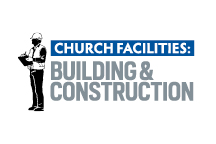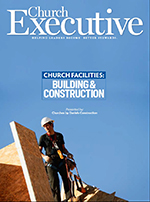
Often, when a church decides it wants to build, the first step is to get a set of plans designed and then bid out with several contractors. Nearly every month, we encounter churches where — after bidding the plans — the project is over budget and cannot be completed.
Other church leaders tell us their buildings were built using this process … and yet they ended up spending a significant amount more than the contractor’s original bid.
You might ask how this could happen. The answer: cost overrun.
By Rodney James
 Also known as a cost increase or budget overrun, cost overrun involves unexpected costs incurred due to an underestimation of the actual cost during design, undiscovered due diligence items outside the designer’s scope, missed details in the plans that are discovered in bidding or construction, or simply poor execution of project management tasks. To avoid these pitfalls, we recommend the design-build construction delivery method. For the most cost-effective results, the owner should negotiate directly with the design-build firm first to establish an overall project budget. For the best possible results, it is absolutely essential that a thorough evaluation of the design-build company being considered is completed prior to any other discussion. Choosing the right team can help you reduce common missteps that lead to cost overruns, and help avoid barriers to timely decision-making. Additionally, there are several strategies to help avoid cost overruns.
Also known as a cost increase or budget overrun, cost overrun involves unexpected costs incurred due to an underestimation of the actual cost during design, undiscovered due diligence items outside the designer’s scope, missed details in the plans that are discovered in bidding or construction, or simply poor execution of project management tasks. To avoid these pitfalls, we recommend the design-build construction delivery method. For the most cost-effective results, the owner should negotiate directly with the design-build firm first to establish an overall project budget. For the best possible results, it is absolutely essential that a thorough evaluation of the design-build company being considered is completed prior to any other discussion. Choosing the right team can help you reduce common missteps that lead to cost overruns, and help avoid barriers to timely decision-making. Additionally, there are several strategies to help avoid cost overruns.
 Start with accurate pricing
Start with accurate pricing
It’s important to begin with a budget, and accurately estimate the entire project cost during design.
Estimates are a common reason for cost overruns. When the bids for subcontractors or the actual costs come in, they are often higher than anticipated; this is why you need accurate costs for the work during design!
This can only be accomplished by a company who actually does the construction and knows the costs, rather than simply budgeting with square foot or estimated pricing.
 Development-associated costs to consider
Development-associated costs to consider
Sight costs — Do you know the requirements to prepare your land for construction? Often, restrictions are not determined during the design phase of the facility. For example, the City could require you to put in a stop light, a turn lane or extensive storm water management. All can add unexpected drain on time and money. The right design-build firm can help uncover more of these unexpected costs earlier in the process, helping to eliminate budget surprises.
The maximum financial benefit of value engineering is the result of constant communication between contractor, subcontractors and architect during the planning phase.
Scope changes — Changes in the scope of work within a project frequently cause cost overruns. These changes result when owners introduce new requirements too late in design, or even after construction begins. They can also arise from unknown problems discovered during construction.
Change orders always result in higher final project cost and are common in the construction industry. Here again, the right design-build firm should manage the design process and structure its fee so there is no incentive for change orders to occur.
Value engineering — The maximum financial benefit of value engineering is the result of constant communication between contractor, subcontractors and architect during the planning phase. At this time, changes or adjustments can be made without incurring any additional costs.
 There is a unique level of expertise specifically needed for church design and construction. If an architect and / or builder are unfamiliar with specific church requirements and opportunities to save in designing and building a church facility, the result will be a higher overall cost.
There is a unique level of expertise specifically needed for church design and construction. If an architect and / or builder are unfamiliar with specific church requirements and opportunities to save in designing and building a church facility, the result will be a higher overall cost.
Not all design-build is created equal
Typically, the problem with conventional design-bid arises when the owner selects the lowest-priced architect, who supplies the lowest-quality set of drawings, which is subsequently given to a general contractor to bid. The general contractor then awards the contract to the lowest bidder, resulting in the work being done by the lowest-priced subcontractor for each trade. In theory, the owner expects the highest-quality job for the lowest possible price — but this never happens.

To deliver a high-quality product for the best possible price requires a single source of responsibility, one that combines the architect and builder into one entity. This allows the builder to assign actual costs to each part of the building throughout the design process. It also gives the owner a more accurate “picture” of project costing.
In this approach, the design is driven by the budget — not just the dream.
Rodney James is Director of Business and Finance for Churches by Daniels Construction. Located in Broken Arrow, OK, this construction company specializes in designing and building churches nationwide.


